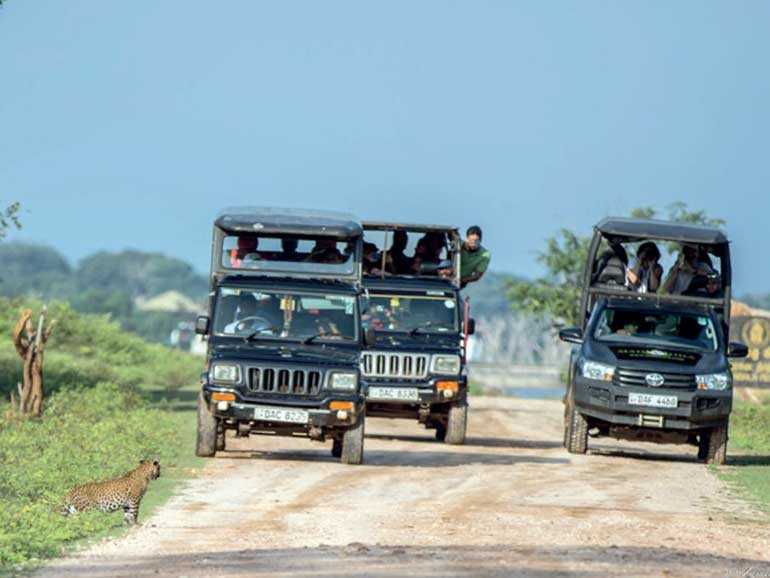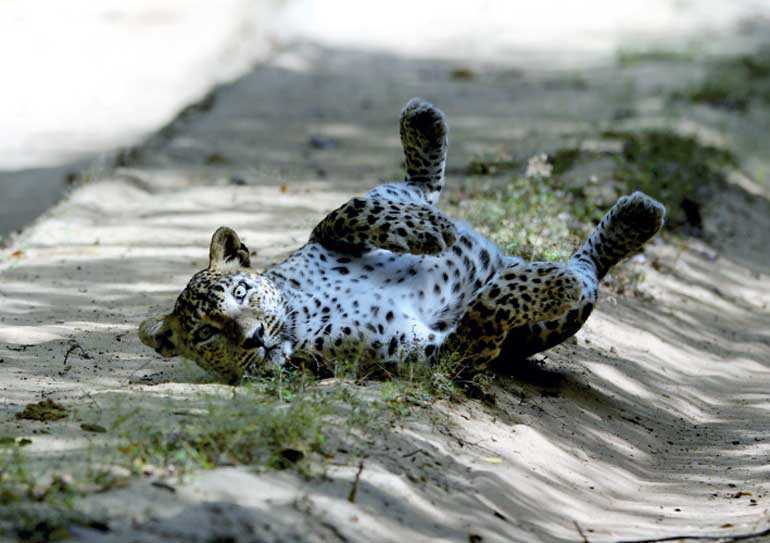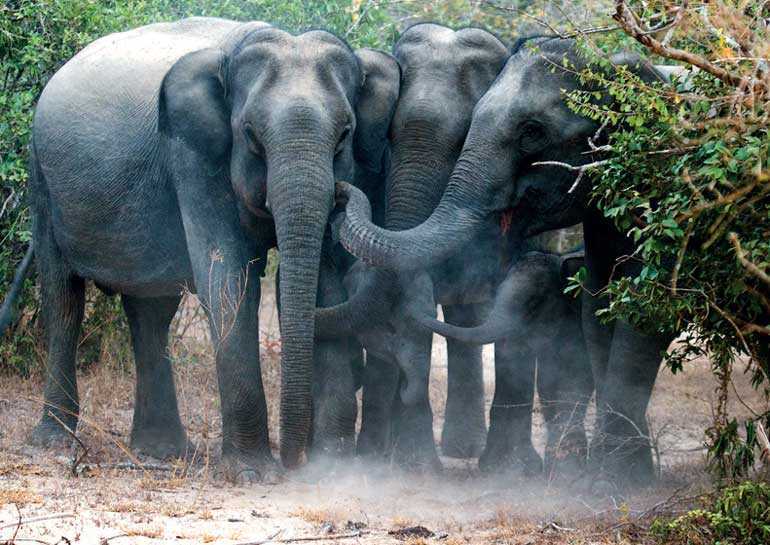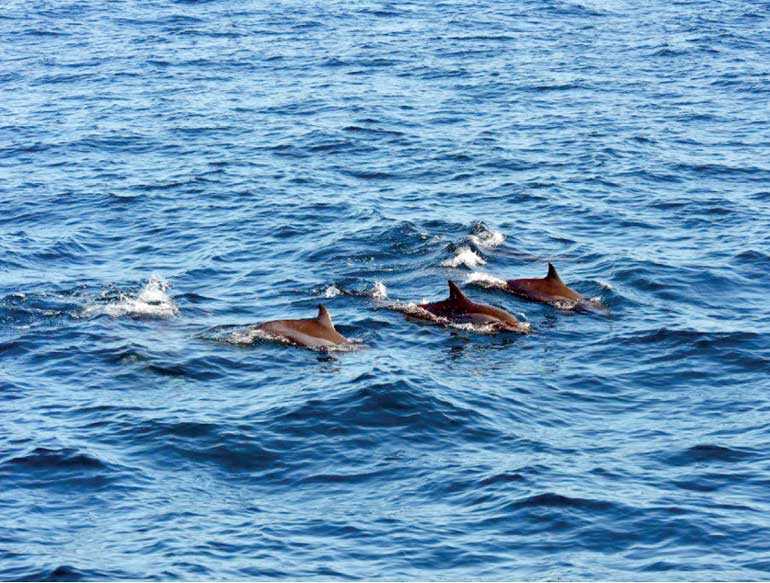Wednesday Jan 14, 2026
Wednesday Jan 14, 2026
Saturday, 7 November 2020 00:05 - - {{hitsCtrl.values.hits}}

By Shailendree Wickrama Adittiya
 The impact of COVID-19 on the tourism industry, especially in Sri Lanka, is a widely-discussed topic. International travel restrictions have had a big hit on the country’s tourism sector, with zero arrivals since 18 March.
The impact of COVID-19 on the tourism industry, especially in Sri Lanka, is a widely-discussed topic. International travel restrictions have had a big hit on the country’s tourism sector, with zero arrivals since 18 March.
According to data published by the Sri Lanka Tourism Development Authority, the country saw only 507,311 tourist arrivals this year, a significant drop from last year’s 1,495,055 tourist arrivals between January and October.
While local tourism picked up to some extent between the nationwide lockdown enforced in March and the emergence of the Divulapitiya and Peliyagoda COVID-19 cluster, it is safe to assume that travel restrictions, safety guidelines, and loss of income and employment prevented many from travelling within the country.
While it may take years to mitigate the impact of COVID-19 on the tourism sector, the pandemic has opened a window of opportunity for eco-tourism. Conservation efforts that are crucial to the country’s wildlife are often put on the backburner to give way to development projects and tourism revenue. However, the pandemic has caused a drop in numbers of national park visitors, perhaps giving the authorities the opportunity to carry out conservation efforts without interference.
Windfall for Sri Lanka’s wilderness and wildlife
This leads to the question of whether COVID-19 is an unexpected windfall for Sri Lanka’s wilderness and wildlife. This was the topic of the public lecture organised by the Wildlife and Nature Protection Society (WNPS) on 22 October. The lecture was delivered by Rukshan Jayewardene, a founding trustee of the Leopard Trust, Wilderness and Protected Areas Foundation Chairman, Environmental Foundation Ltd. Director, and WNPS Past President.
Jayewardene is of the belief that the pandemic opened new opportunities for the country’s wildlife resource in terms of conservation despite the negative impact COVID-19 has had on wildlife tourism. He began with an explanation of the adverse effects of measures taken to increase revenue from tourism, saying park visitation increased from 43,368 in 2008 to 629,246 in 2018.
This has led to overcrowding in national parks and phone calls being made to inform others of animal sightings, which, in turn, results in speeding vehicles. This issue can be solved by restricting phone usage in national parks. However, a trial carried out five years ago was discarded because the calls benefit industry stakeholders.
He explained that increasing visitor numbers to increase revenue in eco-tourism was an inherently unsustainable premise, a practice Sri Lanka has been following without giving too much thought to the consequences.
Does this mean national parks are neglected when tourism collapses, especially since national parks are tourism driven? Jayewardene said this has happened to a great extent, adding, “We prioritise tourism over ecological conservation, biodiversity conservation or looking at how we can sustain this resource.”
He added that wildlife is a resource that is essential to the ecological wealth of this island and that a natural balance exists as long as human intervention and human interaction are absent.
Ecological sensitivity and awareness was required when human intervention takes place. Modifications to parks, for instance, can be carried out in a way that is beneficial to both visitors and wildlife.
Consequences of tourism and photography
Besides speeding and overcrowding, feeding wildlife is another practice that can have drastic consequences. Jayewardene said a lot of feeding takes place in protected areas, with peacocks, mongooses, elephants, and leopards approaching vehicles and begging for food.
“These animals then become problem animals. They depend on human food, they look for it,” he said, adding that the animals will not die if visitors do not feed them, but that human food, especially processed food and bread, can affect the health of the animals.
In terms of photography, Jayewardene said competitive wildlife photography could be ecologically damaging and counterproductive. He explained that there was a need for ethical standards and guidelines for visitors as well as photographers.
In the absence of such guidelines and a sense of responsibility on the part of photographers, they engage in behaviour that is hazardous to them and wildlife.
Role played by the authorities
Two key authority figures to consider are the Department of Wildlife Conservation (DWC) and the Forest Department, which fall under the Ministry of Sustainable Development and Wildlife. Jayewardene spoke about capacity building within the DWC and Forest Department to face current and future challenges, saying, “I cannot see too much money being voted from the treasury for the Wildlife Department in these times but with whatever budgetary vote they have, they need to take stock of where they are.”
He explained that the DWC usually argued that they did not have the capacity to deal with tourism as well as conservation, patrolling, infrastructure maintenance, etc. However, with an absence of tourism, the Department can concentrate on conservation and “redeploy their men in all these other areas and make sure that all areas that have been neglected for a long time are up to scratch when, more or less, normalcy returns.”
Jayewardene emphasised that the closure of national parks has given the industry the opportunity to press the reset button. We are dealing with a ‘new normal’ and it is doubtful we would ever go back to the way things were, he said, adding, “But many things in the wildlife sector should not go back to the way they were, because they are not the good old days, they are the bad old days.”
An important point highlighted during the public lecture was that conservation and development can and should coexist, instead of conservation taking a backseat to give way to development.
However, it is not only Government bodies that are responsible. Those who have a passion for wildlife can also play a role in conservation efforts.
“Conservation requires self-sacrifice in terms of time and effort for no personal gain. Bread and butter conservationists can do a limited amount but will be restricted by their
personal stake in the environment. Effective conservation needs a high level of integrity,” Jayewardene said, adding that networking and collaboration were important.
However, he added, “If privileges, favours, or special treatment is sought or received from what is a 100% Government monopoly, your effort and result will be compromised.”
Wildlife crime
Despite being a country that boasts about its wildlife resources, wildlife crime often goes unpunished in Sri Lanka. Poachers present a significant threat to wildlife, with habituation putting animals at risk of mistaking poachers for visitors.
Poaching also results in dogs being deliberately introduced to parks, with small packs forming over time. However, these dogs may carry diseases like canine distemper and feline enteritis, which can spread among the leopard population when they consume the dogs.
The Wildlife Department needs to be proactive in this regard and collaborate with animal rights organisations to deal with these issues in a humane manner.
Jayewardene also highlighted the role played by political interference and corruption in wildlife crime, saying, “We know there is criminality in politics and political interference in the Departments of Wildlife and Forest is a real problem. There is no easy way to solve that, but saying there is political interference and political pressure on department personnel is not a cop out for not doing your duty.”
He went on to say that corrupt politicians are involved in wildlife crimes like elephant smuggling and that there is an interconnectedness in the way wildlife crime takes place, with individuals, politicians and persons in positions of authority playing a role in these crimes. Jayewardene added that one cannot have too much faith in Government organisations anymore, with investigations into wildlife crime usually going nowhere.
“Wildlife crime is something fairly enmeshed in the fabric of our society as well as any country that has a wildlife resource because there is always illegal money to be made from the sale of wildlife,” he added.
Jayewardene went on to say, “One of the greatest challenges faced by countries like ours is that those who make the laws are also those who break the laws.”
Steps to be taken
Looking at the various concerns regarding wildlife tourism, there are different approaches that can be taken. During the public lecture, Jayewardene made certain suggestions that should be given consideration.
Addressing overcrowding in national parks, Jayewardene suggested limiting access to sensitive ecosystems and parks. Instead of increasing the number of visitors to increase revenue, the Government should consider high-end, low-impact tourism.
“While we are obsessed with the developmental aspect, per capita income and gross national product, we cannot lose what we have naturally inherited as an island,” he added.
Due to the limited role of the public during the pandemic, especially when reporting wildlife crimes, and the role played by the military during present times, Jayewardene suggested informing and educating the military on wildlife resources at risk.
He also highlighted the need for more research and the incorporation of findings into conservation efforts.
In terms of wildlife crimes, Jayewardene said proper legal action and court proceedings would make people reluctant to commit these crimes.
The State and the public both play a key role in bringing about these changes, however, and Jayewardene added, “Public pressure often is the only way that behavioural change comes about within the Government sector.”
Pix courtesy WNPS




